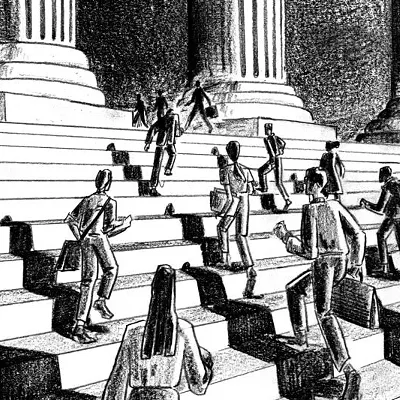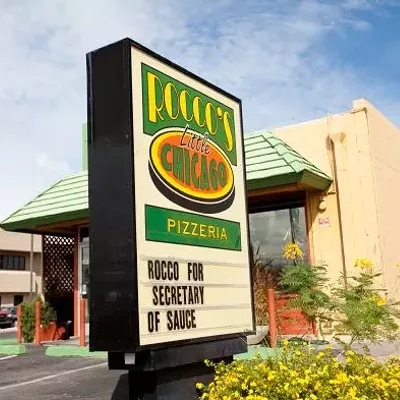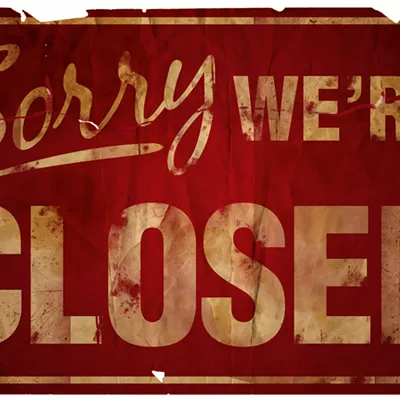The result is a four-year battle between the community-based Empire-Fagan Coalition, mining companies and the Arizona State Land Department, which approved new leases last year for three limestone-mining claims.
The leases--still working their way through litigation--bring up the on-again, off-again debate about Arizona's laws that govern mining and state trust land reform.
Empire High School teacher Mike Carson heads the Empire-Fagan Coalition, which questions if the land department is doing the right thing by approving mining leases near a growing residential area dependent on well water.
Despite the land department's lease approvals, Carson and his neighbors are optimistic they will prevail.
In early 2007, the group was able to get a stay on all activities at the Andrada Quarry, at the end of Wentworth Road, from the Interior Board of Land Appeals. Tucson's Bureau of Land Management office had previously approved a mining and reclamation plan.
The other hope is a lawsuit filed two years ago by the Pima County Board of Supervisors against the Arizona State Land Department, challenging the mining designations. Three years ago, as part of its open-space agenda, the county spent $8.7 million to buy the 17,000-acre Bar V Ranch nearby. County representatives have said mining operations would destroy watersheds and riparian habitats, and expressed concern regarding polluted sediments going into the springs and creeks that feed local wells. County Administrator Chuck Huckelberry stated in 2005 that it would make more financial sense for the state to sell the land to the county for open space.
The land department, however, insists mining is an appropriate designation for the area--a designation that will make $2.7 million for the state from lease revenues in a 20-year period. Carson and his neighbors say the land is worth more if left alone.
The coalition members are collecting signatures for a petition they plan to present to Gov. Janet Napolitano's office on March 31. Carson says the coalition was told by State Land Commissioner Mark Winkleman that the land department is not required to consider public comment, but that it serves at the pleasure of the governor.
"Our strategy is to turn up the heat on the governor. We wanted to stay cordial with the land trust, but that hasn't been getting us anywhere," Carson says. "It's time to get out from behind the measures (Napolitano) is using and stand for what she means."
According to Jamie L. Hogue, deputy state land commissioner, the laws that govern mining and the state land trust will prevail, not special instructions from the governor.
"We've been speaking with representatives of the group and letting them know about our legal process. State and federal mining statutes are what they are. We do what we can to protect our assets within those constraints," Hogue says.
Hogue says California Portland Cement forced the land department to approve the leases after the company went to court in December 2006 to maintain two mining claims it purchased three years ago. California Portland must now submit a mine operation and reclamation plan to the land department before any mining activity can take place.
"We have to review and approve them. Nothing can happen until those plans are submitted. It's something that could take one or two weeks, or take a month," Hogue says.
California Portland Cement manager Dave Bittel says plans are complete, but the company is waiting for the approval of a Pima County Flood Control permit and another from the Army Corps of Engineers.
Besides the two adjacent leases owned by California Portland, there is a third claim owned by Montana resident Charles P. Seel. Hogue says Seel took legal action against the land department in the fall of 2007, and a judge approved a lease for up to 20 years, Hogue says.
Seel's mineral application includes a road easement that would bring Seel's trucks right into the middle of California Portland's claims. Carson and other members say they worry about the 23-ton trucks used in mine operations using the same roads as cars and school buses.
Hogue says Seel has been offered a lease from the state, but rather than signing it, he has "expressed some unhappiness" regarding lease requirements. Hogue says Seel has yet to submit a list of those concerns.
Phoenix attorney Jerry Haggard, who represents Seel, says he is unable to discuss his client's negotiations with the land department, especially since the parties remain in litigation.
Carson says the land department's claim that its hands are tied is debatable. He doesn't interpret recent court rulings as favorable to the mines, but a reminder that the land trust must rely on the five criteria used to define state land uses and leases.
Two of the five criteria require the land department to look at any impact that mining activity might have on the value and income potential of surrounding property, and whether the mining activity creates a liability greater than the mining income potential.
"They have a clear out. ... The criteria are clear for denying these mineral lease applications, but they've decided not to," Carson says.
Carson adds that it's important for the governor to know that two of the proposed mines are located in Davidson Canyon, a riparian area with a spring-fed creek in the Santa Cruz watershed that happens to support the area's home wells. Last year, the Arizona Department of Environmental Quality proposed the state recognize Davidson Canyon as an "Outstanding Arizona Water," which would allow the state to adopt specific protections that Empire-Fagan members hope can help prevent mining.
The Empire-Fagan Coalition is also concerned about reclamation plans submitted by the companies. Reclamation is the industry's promise to restore the land after mining operations are finished. The coalition members point to the Andrada Quarry at the end of Wentworth Street.
The former mining site has gaping holes filled with water and old tires, surrounded by blasted-out boulders. An old crushing facility is covered in graffiti and has been used over the years for shooting practice.











